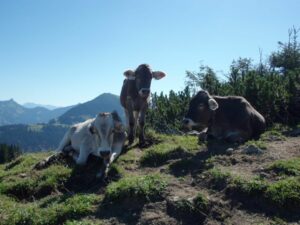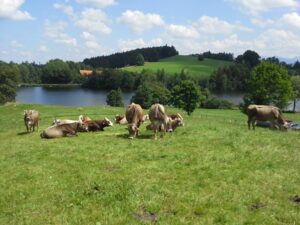
The Cow
The cow is a beloved and very useful domesticated animal. We appreciate its good milk and dairy products. Respective to the country in which the bovine is found, we have the expressions “holy cow,” “dumb cow,” or “as famous as a colored cow.”
We can learn one or the other thing from the God-given way of life of the cow. I would almost like to say spontaneously: The cow gives itself very much time to digest its food. Is this a good tip for me?
- Do I eat too quickly, too fast? Do I take time after a meal, for example, to take a small siesta or to take a walk outdoors?
- Do I give myself quiet time to digest the many impressions of the day?
Father Kentenich referred to the cow in many statements regarding self-education and advised us to do something either positive or negative in terms of a weak point [in our nature]. For example, at an event for youth he said:
“Was N. always happy or was she a pessimist? Does she always go about—how should I put it—like the COW down there in our barn, with its head always down?” (July 10, 1966)
 If I have a very melancholic disposition, then I must consciously reject a downcast demeanor; rather I look “upward,” above all, to see and rejoice in what is good, bright, to see the beautiful things of life.
If I have a very melancholic disposition, then I must consciously reject a downcast demeanor; rather I look “upward,” above all, to see and rejoice in what is good, bright, to see the beautiful things of life.
When Father Kentenich was in the concentration camp of Dachau, he often encountered a fellow prisoner who went about very downcast and depressed. What did Father Kentenich do? He wanted to help the prisoner change his negative mood into a positive one, so quite often when Father Kentenich met him he would say:
“But today the sun is shining again!”
The fellow prisoner would look up and laugh. An educational success, even if it was a small one!
On another occasion he pointed out that self-education must have clear objectives based on temperament, personality type, manner of being, or character weaknesses.
“In fact, I always emphasize that the acts of mortification we make should perfect our nature. For example, what do I have to do if I always have my head down like a COW that is driven into a barn?” (August 8, 1966)

